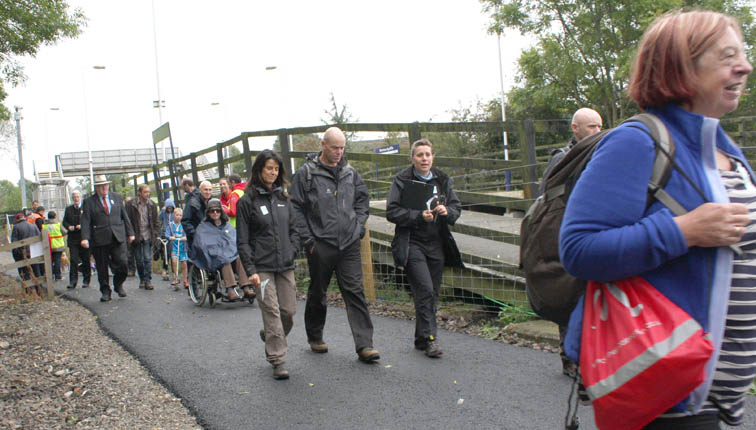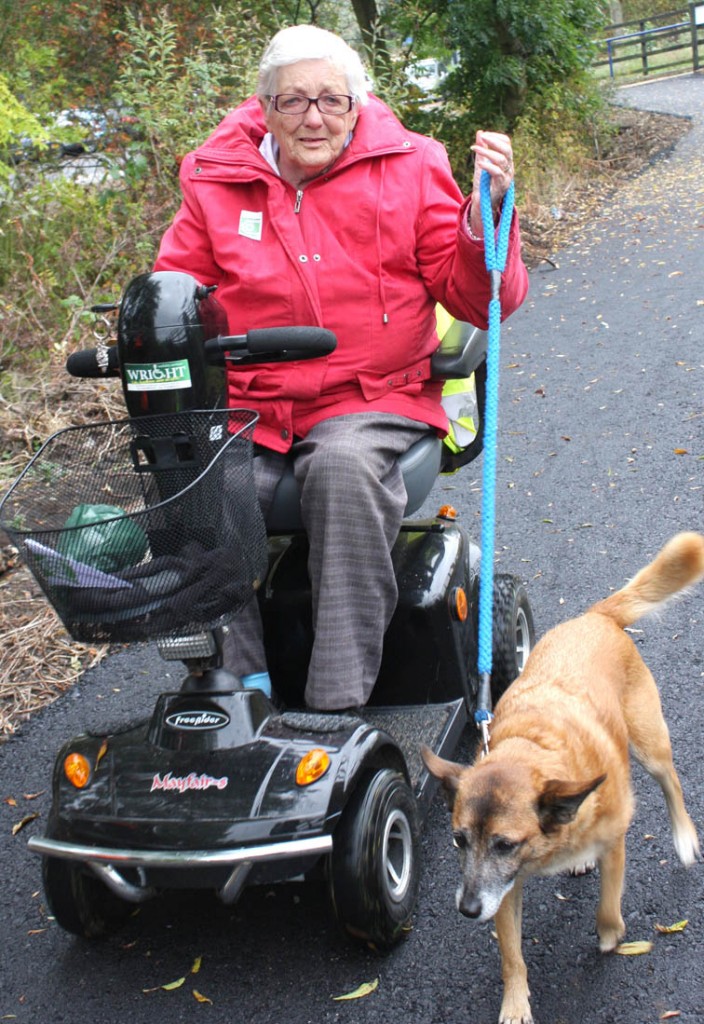Cyclists, pedestrians, families with pushchairs and children lined-up to celebrate the official opening of “Locomotion Way”, the new public path linking the past and the future between Shildon and Newton Aycliffe.
They were among the first to use the new two-mile route – an event marked with a guided tour of local geology and wildlife, ending at the 10th anniversary of the Steam Gala at the Locomotion Museum, Shildon.
The tarmacked path comes full circle as it traces the route of the former Stockton and Darlington railway line and ends up on the doorstep of Hitachi who are bringing train building back to County Durham with an £82m train factory providing 730 jobs.
The three-metre wide Locomotion Way is a fast track for commuters by bike or on foot to work or school as it is exactly half the distance of the road route between the two towns. It is also open to those who want a more leisurely experience such as families with pushchairs, runners and horse-riders and is fully accessible for wheelchairs and mobility scooters.
When it opened in 1825, the original line was the first public railway to bring together passenger and goods traffic and steam locomotives
Cllr Neil Foster, Cabinet member said: “This is a fitting way to celebrate the opening of an important corridor as it not only links two towns but also the past and the future. It will also make active travel a viable and sustainable option to getting to school, work and other services.”
Durham County Council has been working closely with the landowners Network Rail and has provided £350,000 funding. A further £300,000 has come from the government via the Sustrans Links to Communities Fund.
The path comes within the Local Motion campaign, backed by the Council, to promote sustainable transport and healthy lifestyles throughout south Durham.
The Stockton and Darlington Railway operated in North East England from 1825 to 1863 and the first line connected collieries near Shildon with Stockton-on-Tees and Darlington. The movement of coal to ships rapidly became a lucrative business and the line was soon extended to a new port and town at Middlesbrough.
Doing the Locomotion Way













